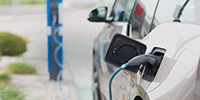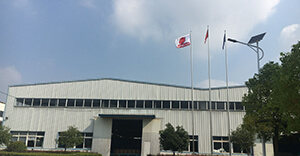How to charge SLA lead acid batteries,a tutorial for engineers about lead acid
|
The basic lead acid battery is ancient and a lot of different charge methods have been used. In the old days, when voltage was difficult to regulate accurately, flooded lead acid batteries were important because the water can be replaced. The lead acid chemistry is fairly tolerant of overcharging, which allows marketing organizations to get to extremely cheap chargers, even sealed lead acid batteries can recycle the gasses produced to prevent damage to the battery as long as the charge rate is slow. We offer a range of chargers from inexpensive to very sophisticated, depending on the requirements of the customer, but all of the chargers we sell off-the-shelf are highly regulated sophisticated chargers that cannot overcharge the battery. Some lead acid batteries are used in a standby condition in which they are rarely cycled, but kept constantly on charge. These batteries can be very long lived if they are charged at a float voltage of 2.25 to 2.3 volts/cell (at 25 degrees C) (13.5V to 13.8V for a 12V battery). This low voltage is to prevent the battery from losing water during long float charging. Those batteries that are used in deep discharge cycling mode can be charged up to 2.45 volts/cell (14.7V for a 12V battery) to get the highest charge rate, as long as the voltage is dropped to the float voltage when the charge is complete. Minimum voltage Coulometric Efficiency. This is the efficiency of battery charging based solely on how many electrons you push in. If you compare watts in to watts out you have to take into account that the battery charging voltage is higher than the battery discharging voltage. The coulometric charging efficiency of flooded lead acid batteries is typically 70%, meaning that you must put 142 amp hours into the battery for every 100 amp hours you get out. This varies somewhat depending on the temperature, speed of charge, and battery type. Sealed lead acid batteries are higher in charge efficiency, depending on the bulk charge voltage it can be higher than 95%. Unregulated Transformer-Based Chargers These are the absolute cheapest chargers around. They consist of a wall mount transformer and a diode. The transformer is designed to deliver 13 to 14 volts over a reasonable current range. The biggest problem with this approach is that when the current tapers off, the voltage raises to 15, 16, 17, even 18 volts. At these high voltages electrolysis of the water in the battery starts in. These must not be left to trickle or float charge a battery, they must be disconnected when the battery is fully charged. This is not a problem with flooded batteries as long as you check the water periodically and refresh it. Sealed lead acid batteries can recycle the generated gasses as long as they are being overcharged at less than C/3. However, leaving the battery to be overcharged even at C/10 will corrode the plates if left on for weeks at a time. The transformer is so designed as to limit the current while the battery is in absorption mode. As the battery voltage rises the current decreases to top off the battery. Because the transformer is used to control the current and voltage these chargers are typically heavy and get hot. Note to our OEM customers: even though we support our OEM customers with unregulated transformer chargers to help them stay cost competitive, many of our new customers come to Wisdom Power because someone else sold them an unregulated charger without explaining the trade-offs, and the end-user complaints forced them to look for a better charger. Most of the time the complaints come from commercial customers rather than consumer customers. We prefer to offer the inexpensive, precise, regulated chargers that use switchmode power conversion. Taper chargers Regulated taper chargers are very useful when you need a 12V or 24V battery backup. A taper charger in parallel with the battery, in parallel with the load makes an effective battery back-up. You should take care to ensure that the taper charger is designed to give continuous current equal to the load plus some left over for battery charging. It is also important that the current limit of the taper charger is the voltage-cut-back method, and not the hiccough method or other PWM methods. An example of suitable switching type regulated taper chargers that can be used in battery back up applications is here There are two ways to make a regulated charger. The first is to use a transformer and a linear voltage regulation circuit. This has the disadvantages of weight and heat, but it is still inexpensive. The second uses a modern switching power supply in a wall mount or desk mount package. These low-power high-frequency switchers are surprisingly cheap, efficient, and small. They are rapidly taking over the overnight charging requirement in consumer equipment. An example of a switching-type taper charger is here . |













